This essay continues our investigation of America’s prison system, and extends D-A-P’s collaboration with Ball State architecture students into the fifth year. —Ed.
Julia Voigt
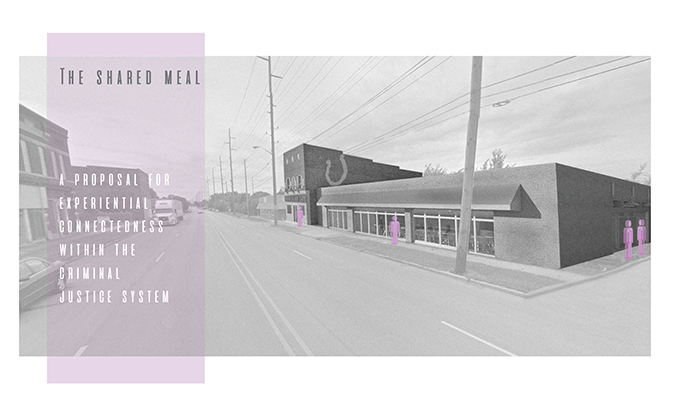
Despite jails being one of the most recognizable typologies of the built environment, the criminal justice system itself is far removed from the realm of the architectural profession. This lack of attention given to the penal system within the profession highlights a larger, societal issue at hand: that, as noted by author Michelle Alexander, “… criminals are the one social group in America that nearly everyone–across political, racial and class boundaries–feels free to hate” (Alexander 228).
Such hatred seemingly allows for society’s blissful ignorance of the lawful injustices committed within the confines of the U.S criminal justice system. I too was oblivious to the subject of mass incarceration before it was introduced to me as the subject of my architecture studio project. But over the course of a semester, the research I conducted resulted in a profound alteration in my perception towards the system and its 2 million detainees. To explain the progression of the project is to explain the progression of my own perception; one could not advance without the advancement of the other.
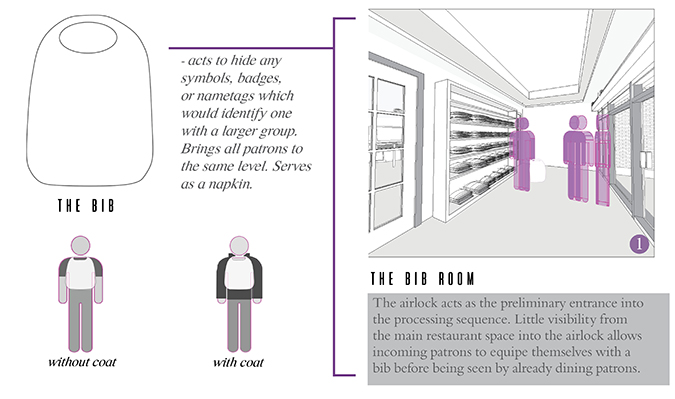
The project itself called for the design of a jail. In typical architecture student fashion, I had begun by asking myself how I could “alter the experience”, in this case, of jail in-take. I had wished for two parties–the arresting officer and the arrestee–to have a conversation as a way to “add a little humanity” to the process. However, I recognized that the atmosphere surrounding an arrest would most likely prove to be counterproductive for any conversation to occur. As I debated how to address the situation, I (quite naively) asked myself if the officer could share a cup of coffee with whomever they had just arrested. My reasoning: “Well, I’ve never been in a bad mood after eating.” Thus, the basis of my project was born, all due to my awareness of my consumption of coffee and baked goods.
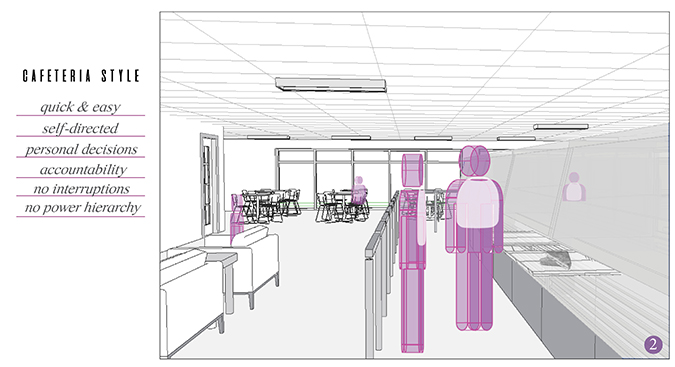
My response to the design challenge of a jail would ultimately be the design of a restaurant where the arresting officer would have a shared meal with the arrestee prior to processing. It would not be until later that I would fully understand the significance of what I was proposing. However, in the meantime it would be a semester full of ponderings about seemingly insignificant details and moments that one might experience throughout the sequence of a meal. How does one enter a restaurant? How is the food served? What do people wear? All of these questions (and more) prove to be infinitely more complicated when considered alongside the complexity of an arrest and the complexity of the U.S criminal justice system itself.
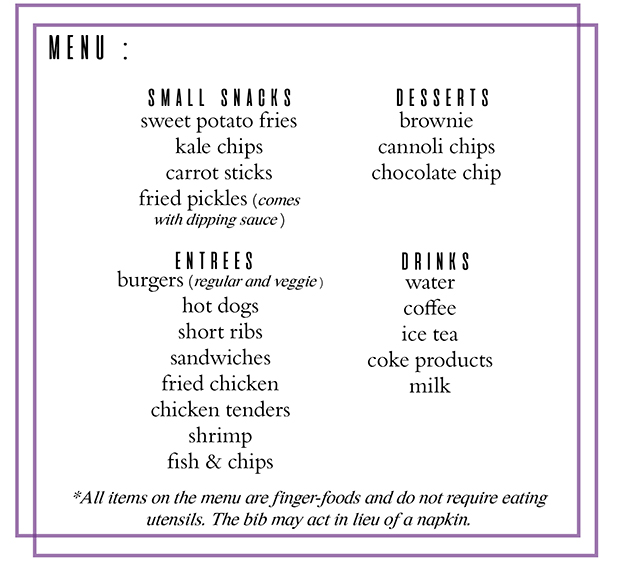
There were countless questions that I asked myself and that I deliberated over with others. These questions led to further questions, which backtracked to different questions I had asked myself two weeks previous. The answers (if they could even be called that) not only contributed to the design of a restaurant, but also forced me to evaluate what I could ethically ask of others and of myself. Despite the rage I felt at towards the brokenness of the criminal justice system, I could not negate the fact that sometimes people are in that broken system for a reason. Just because I wanted that picture of a bib-wearing police officer sharing a plate of wings with an equally bib-clad soon-to-be citizen in custody did not mean that I could forget that sometimes people commit absolutely monstrous acts. And yet, despite the acknowledgement of this harsh reality, I could not abandon the proposal for a shared meal. It was wishful thinking, but I truly believed that the idea of a shared meal was something powerful and absolutely vital to the project.
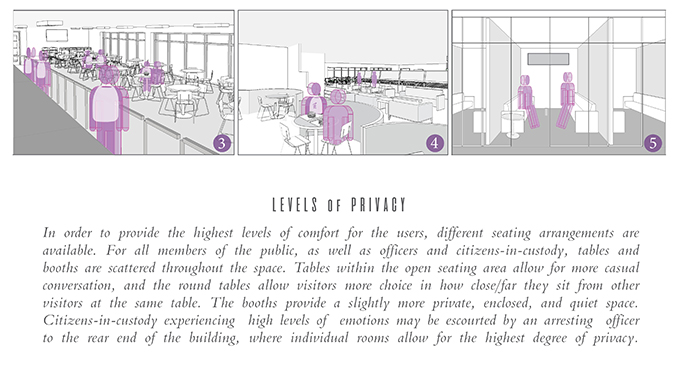
As the project continued, I eventually discovered that my request for a shared meal was not so far-fetched. In circumstances too lengthy to describe here, I came into the presence of police officer/church minister Brian Willingham in Flint, Michigan. It was in talking with Brian that he mentioned that, upon attending to emergency calls from Flint residents, officers would often be invited into residents’ homes for coffee or even full meals. The residents simply wanted someone to hear their story, and as the most visible of public servants, the police officers were the ones called to listen. Such a profound expression of humanity within a city as depressed as Flint allowed me to believe that I could continue my exploration of a shared meal.
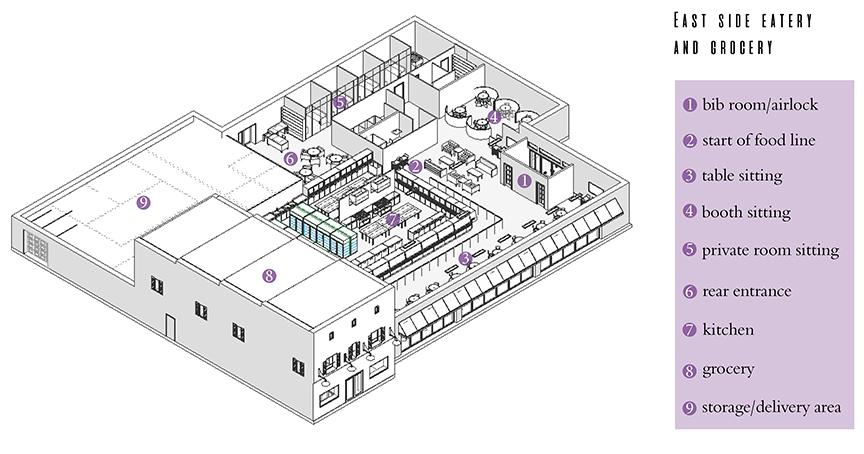
The design of the restaurant left many questions unanswered or unattended to, a fact that I am fully aware of. Security measures were not as extensive as they could be. Many would probably object to the fact that the restaurant would be open to the public. Even I am not quite sure what the qualitative objective of the meal would be. However, I partly wonder if asking what the meal “does” is ignoring what the meal signifies. Reverend Emory Davis explained to me the concept of a shared meal in such a way: “When two or more people share bread – food – that which a person needs to feed the body so as to continue living and functioning, what one might say is that ‘Here is what I have, here is the food I have and I am willing to share it with you.’ We sit in proximity of each other and find a real commonality in the need to sustain ourselves. In the act of eating together a fellowship is formed”. Any attempts to “fix” the criminal justice system requires at first, I believe, a fundamental altering of societal consciousness. I believe the first step towards that seemingly unreachable goal can be found in the small moments of fellowship, can be found in the fellowship experienced during the sharing of a meal. It might be outlandish and it might be unrealistic. However, I do not doubt the idea and pure power of fellowship. And as such, let’s dine.
Julia Voigt is an architecture student at Ball State University. Her focus is in exploring how social and political factors influence populations and how that relates to the built environment.










